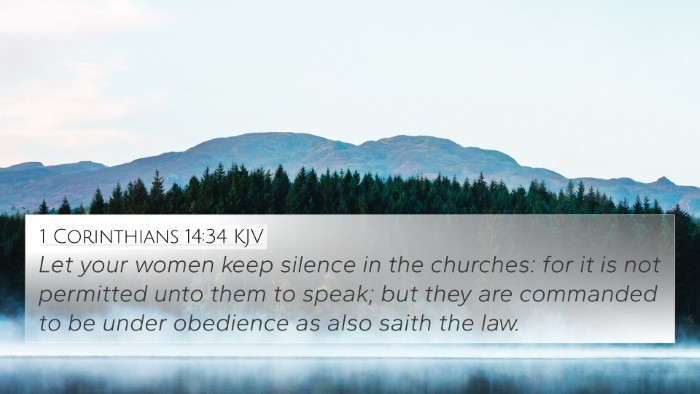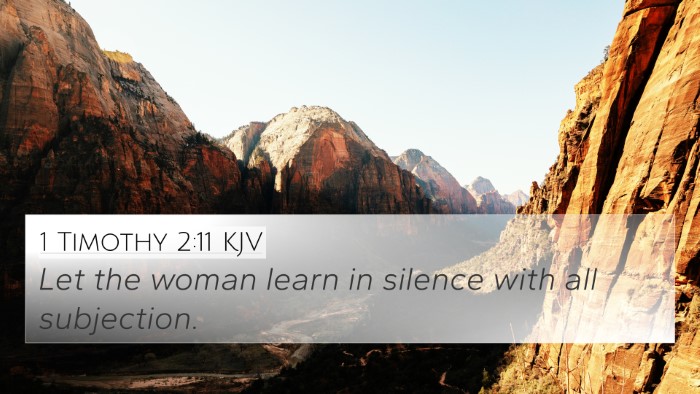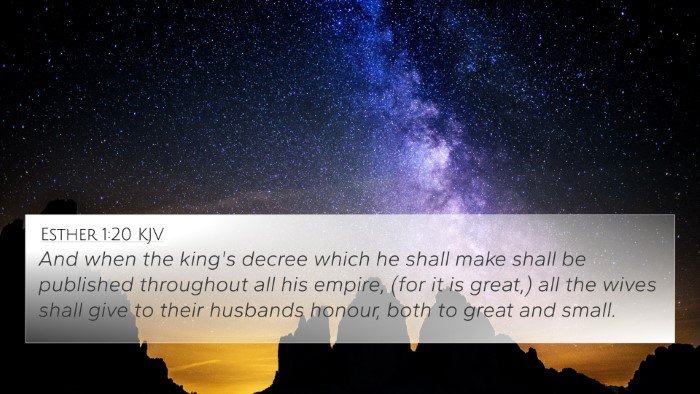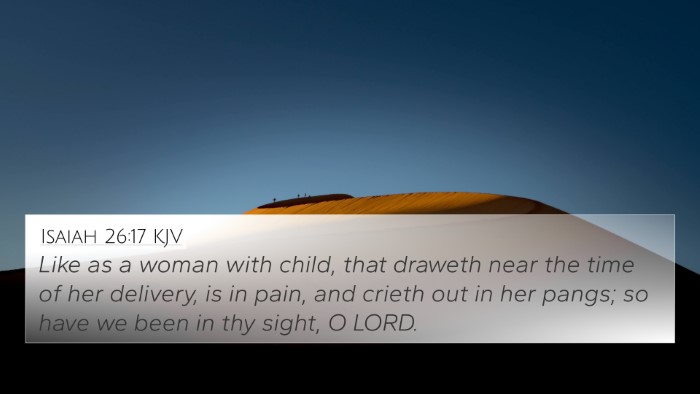Interpretation of Genesis 3:16
Genesis 3:16 states: "To the woman he said, 'I will surely multiply your pain in childbearing; in pain you shall bring forth children. Your desire shall be for your husband, and he shall rule over you.'" This verse is rich in implications regarding the roles of men and women following the fall of humanity, offering a framework to explore deeper theological insights.
Understanding the Verse
The context of Genesis 3 reveals the theological implications of sin entering the world. In commentary insights provided by Matthew Henry, we find that this verse addresses the painful consequences of sin, emphasizing the woman's pain not only in childbirth but also in her marital relationships.
Albert Barnes adds that this statement points to the struggle that will arise between a woman’s desire for relationship and the man’s leadership, signifying a shift from the original harmony to conflict and imbalance within the marital relationship.
Furthermore, Adam Clarke notes that the pain in childbearing indicates a physical suffering, symbolizing larger burdens women carry as caretakers and nurturers in a world affected by sin. The reference to desire and rule illustrates a power dynamic that emerges as a consequence of the fall.
Thematic Elements
- Consequences of Sin: The verse illustrates the broad consequences of disobedience to God, explicitly impacting familial and gender dynamics.
- Gender Roles: The struggle referenced hints at a broader discourse on traditional gender roles in relation to biblical instruction.
- Childbearing and Suffering: The verse serves as a reminder of the intertwined feelings of joy and pain in motherhood, inviting reflection on the sacredness and challenges of bringing life into the world.
Cross-References
To explore this verse in a broader biblical context, we can turn to several cross-references:
- Genesis 4:7: Discusses the concept of desire and mastery, establishing a theme of struggle in relationships.
- Genesis 2:24: Explains the foundational idea of marriage, highlighting both unity and hierarchy within the relationship.
- 1 Timothy 2:15: Reiterates the relationship between childbearing and salvation, emphasizing women's roles in God's plan.
- Proverbs 31:10-31: Illustrates the multifaceted roles women play, juxtaposing strength with domesticity.
- Ephesians 5:22-33: Provides insights into the roles of husband and wife, echoing themes from Genesis regarding leadership and submission.
- Romans 16:1-2: Highlights women's significant contributions to the early Church, challenging notions of dominance.
- Galatians 3:28: States that in Christ, gender inequalities are transcended, calling for a radical understanding of unity in the Spirit.
Exploring Connections
Connecting Genesis 3:16 with New Testament teachings can bring further clarity. The connections between Bible verses reveal a consistent theme of redemption amidst the consequences of sin. As we analyze these Bible verse parallels, we can develop a deeper understanding of God’s intricate design for humanity.
Tools for Bible Cross-Referencing are invaluable for anyone studying these themes. Bible concordances and cross-reference guides allow readers to explore cross-referenced themes in the Bible, fostering a more comprehensive biblical research experience.
Applied Insights
In applying Genesis 3:16 to modern contexts, highlights include:
- Redefining Pain: Understanding pain in childbirth as a means of compassion and connection to the struggles of mothers globally.
- Role of Men and Women: Examining the balance between leadership and partnership within relationships.
- Theological Reflection: Encouraging deeper theological reflections on how sin distorts divinely intended relationships.
Conclusion
Genesis 3:16 contains a wealth of information that invites us to consider the complexities of human relationships, especially between men and women. Utilizing cross-referencing biblical texts can deepen our understanding of this verse, connecting it with the broader narrative of redemption found throughout Scripture.
By exploring these Bible verses that relate to each other, scholars and laypersons alike can uncover the nuanced dialogue between the Old and New Testament, enhancing their understanding of God's purpose amid human fallibility.


























